
8 Victorian Scientists Who Investigated Ghosts
Some 19th-century scientists embraced psychical research, while others tried to debunk the sensational stories.
2023-10-11 02:29
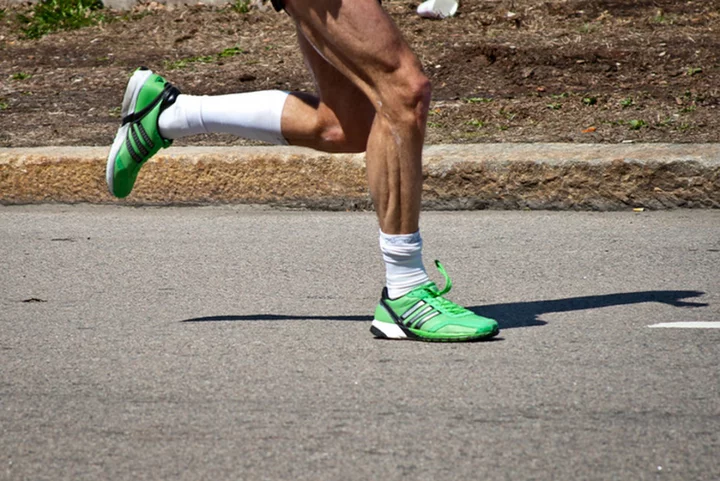
Scientists find what works best for depression – antidepressants or running
Scientists have found that a 16-week regimen of running has similar effect for mental health as antidepressants taken over the same period, an advance that may lead to better treatment guidelines for patients. Running, however, showed more benefits compared to antidepressants, whose effects on physical health slightly worsened over time, say researchers, including those from Vrije Universiteit (VU) in Amsterdam. Despite this, the yet-to-be peer-reviewed study presented at the 36th European College of Neuropsychopharmacology (ECNP) Congress, found that adherence to running was lower than to medication. The first-of-its-kind study compared the effects of antidepressants with running exercises for anxiety, depression, and overall health in over 140 patients. The research found that while both have the same benefits for mental health, a 16-week course of running over the same period scored higher in terms of physical health improvement, whereas antidepressants lead to a slightly worse physical condition. Scientists, including Brenda Penninx from VU, also found that the drop-out rate was much higher in the group that initially chose exercise. In the study, patients were offered a choice of treatment of either SSRI antidepressants for 16 weeks, or group-based running therapy for 16 weeks. Forty-five of the participants chose antidepressants – SSRI Escitalopram for 16 weeks – while 96 participated in running that included aiming for two to three closely supervised 45-minute group sessions per week for the same period. Researchers say members of the group which chose antidepressants were slightly more depressed than the members of the group that chose to take running. “This study gave anxious and depressed people a real-life choice, medication or exercise. Interestingly, the majority opted for exercise, which led to the numbers in the running group being larger than in the medication group,” Dr Penninx said. Antidepressant treatment required patients to adhere to their prescribed medication, and was not found to directly impact daily behaviors. However, exercise was found to also address sedentary lifestyles often found in patients with depressive and anxiety disorders by encouraging them to go outside, set personal goals, improve their fitness, and participate in a group activity. But researchers also found that adherence to protocol was lower in the running group than in the antidepressant group, despite the initial preference for running over antidepressants. While at the end of the trial, about half the number of participants in both groups showed improvement in depression and anxiety, the running group also had improvements in physical health markers like blood pressure, heart function, and weight. The antidepressant group, on the other hand, showed slight deterioration in these metabolic markers, the study noted. “Antidepressants generally had a worse impact on body weight, heart rate variability, and blood pressure, whereas running therapy led to improved effects on general fitness and heart rate for instance,” Dr Penninx said. While antidepressants have been found to be safe and effective, working for most people, scientists call for extending the treatment arsenal by implementing exercise therapy. “Telling patients to go run is not enough. Changing physical activity behavior will require adequate supervision and encouragement as we did by implementing exercise therapy in a mental health care institution,” Dr Pennix added. Read More Postnatal depression drug ‘shows benefits five years on’ John Fetterman wants people to stop fussing about his use of captioning technology Mental health ‘top reason for children contacting Childline’ Largest study of centenarian blood reveals secrets to longevity Scientists map where 27 different types of love are felt in the body Biggest ever solar storm identified using ancient tree rings
2023-10-10 16:58

Largest study of centenarian blood reveals secrets to longevity
Centenarians tend to have lower levels of glucose, creatinine and uric acid from their sixties onwards, according to the largest study of its kind that may lead to a simple blood test to predict a person’s chance of reaching 100. The research, published on Monday in the journal GeroScience, is the biggest to date to measure and follow up the levels of different molecules in the blood of people born between 1893 and 1920. Scientists, including those from Karolinska Institutet, assessed the data on blood molecules from over 44,500 Swedes who underwent clinical testing between 1985 and 1996 and followed up till 2020. They focused specifically on people born between 1893 and 1920, who were between 64 and 99 years old when their blood samples were first tested, and followed them up as they grew closer to 100 years of age. About 1,200 individuals in the study, or about 2.7 per cent of the participants, reached 100. Researchers compared this subset’s data with those of their peers who were younger than them. The analysis found 12 blood-based molecules associated with metabolism, inflammation as well as liver and kidney function, that were also linked to ageing or mortality in previous studies. These molecules included total cholesterol and glucose as markers of metabolism, uric acid indicating inflammation levels, enzymes indicative of liver health and creatinine as a measure of kidney health. Researchers also looked at albumin and iron levels in the blood. Except for a liver enzyme and albumin, all other molecules were found linked to the likelihood of a person becoming a centenarian. Those with increased levels of total cholesterol and iron had a greater likelihood of becoming centenarians compared to those with lower levels. However, for molecules including glucose, creatinine, uric acid, and liver enzymes, lower levels were associated with higher chances of living past 100. “We found that, on the whole, those who made it to their hundredth birthday tended to have lower levels of glucose, creatinine and uric acid from their sixties onwards,” researchers wrote in The Conversation. “Very few of the centenarians had a glucose level above 6.5 earlier in life, or a creatinine level above 125,” they said. While the differences found in the study between groups were small in some cases, researchers said the findings still suggest a “potential link” between metabolism, nutrition and longevity. However, the study falls short of recommending lifestyle factors or genes responsible for these blood molecule levels. “While chance likely plays a role for reaching age 100, the differences in biomarker values more than one decade prior death suggest that genetic and/or lifestyle factors, reflected in these biomarker levels may also play a role for exceptional longevity,” scientists wrote in the study. “However, it is reasonable to think that factors such as nutrition and alcohol intake play a role. Keeping track of your kidney and liver values, as well as glucose and uric acid as you get older, is probably not a bad idea,” they said. Read More Good financial planning could increase life expectancy, study suggests Scientists find gene that grants long life – and successfully test it on another species Scientists extend mice lives by connecting their blood to young ones
2023-10-10 13:26
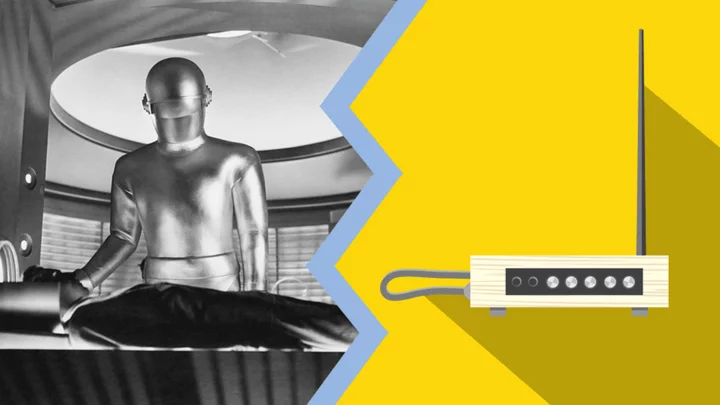
Audio Invasion: How the Theremin Went From Soviet Labs to Hollywood
The theremin—a spooky instrument that scored the biggest sci-fi films of the 1950s—was invented by accident.
2023-10-10 03:21

The sun ripped a hole in the Earth's magnetic field and the results were spectacular
The Sun has been punching holes in the Earth’s magnetic field lately – but that’s not as alarming as it sounds. Instead, they have been sparking magnificent light shows across Europe and North America, made up mainly of crimson auroras and sustained periods of red sky. The displays have been caused by disturbances in the Earth’s magnetic field, which happened after a massive ejection of plasma from the Sun came hurtling our way. The event, known as a coronal mass ejection, made a hole in the planet’s magnetic field, allowing highly charged particles to make their way in and cause a geomagnetic storm. Normally, the Northern Lights are made up of mainly green, with the occasional flash of other colours including red. However, longer periods of red light shows are very rare. The highly charged particles then get channelled towards the north and south poles, where they interact with gas molecules in the atmosphere. They, in turn, release photons, causing the aurora borealis in the north and aurora australis in the south. Normally, the Northern Lights are made up of mainly green, with the occasional flash of other colours including red. However, longer periods of red light shows are very rare. But what makes this geomagnetic storm different is that the particles coming from the Sun collided with oxygen atoms higher in the Earth’s atmosphere than normal. The altitude at which this interaction happens dictates the colour of the aurora. This time, the charged particles were between 300 and 400 kilometres in the sky. There, the oxygen is less concentrated and doesn’t need as much energy to cause it to react. It all adds up to a flash of crimson red light in the sky. Somewhat excitingly for aurora-watchers, this sort of event is likely to get more common over the next two years, as the Sun’s activity becomes heightened until its peak in roughly July 2025. Looks like there will be more of these incredible ruby light shows soon enough. Sign up to our free Indy100 weekly newsletter Have your say in our news democracy. Click the upvote icon at the top of the page to help raise this article through the indy100 rankings.
2023-10-09 23:21
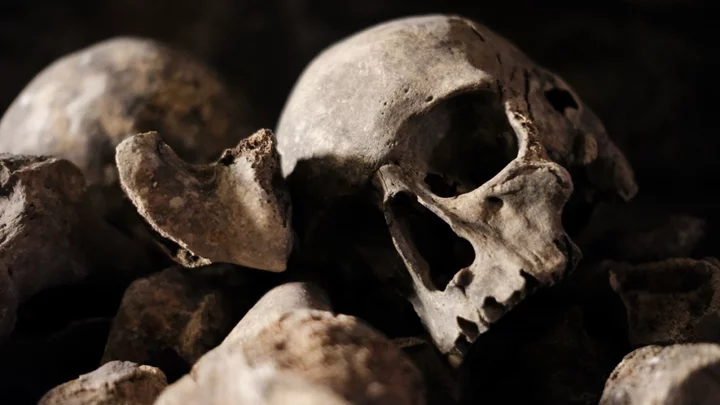
Scientists warn humanity has a '1 in 6' change of dying out this century
In 2020, philosopher Toby Ord published The Precipice, a book on the risk of human extinction. The chances of "existential catastrophe" for humanity in the next century according to Ord? One in six. It was a shocking number that alarmed many. After years of being flooded with warnings over climate change, rogue AI, nuclear weapons and pandemics, it's hard to disagree that humans face worrying chances. In his book, Ord discusses a number of potential extinction events, some of which can be examined through history. His research involved looking at the number of space rocks that have hit the moon over its history to figure out the likelihood than an extinction-sized asteroid hitting Earth. This was, in fact, looked at in 2022 by French scientists Jean-Marc Salotti, he calculated the odds of an extinction-level hit in the next century to be roughly one in 300 million. By contrast, Ord estimated the risk to be one in a million, although he does point out a considerable degree of uncertainty. Probabilities can be hard to understand in this context. Traditional probability, for example, relies on observations and a collection of repeated events, but human extinction would be a one-off. But there is another way to think if, called Bayesianism, after the English statistician Thomas Bayes. It sees probabilities as a ranking system of sorts. Specific number predictions shouldn't be taken so literally, but rather compared to other probabilities to understand the likelihood of each outcome. Ord's book contains a table of potential causes of extinctions, accompanied by his personal estimates of their probability. From a Bayesian perspective, we can view these as relative ranks. Ord thinks extinction from an asteroid strike (one in a million) is much less likely than extinction from climate change (one in a thousand). However, even using Bayesianism traditionally requires the incorporation of observational evidence. So, what do we make of Ord's "one in six"? Well it's better to take it less literally but to think of it as a warning, to jump start action on issues such as climate change to hopefully reduce the risk of human extinction in the next century. Sign up to our free Indy100 weekly newsletter Have your say in our news democracy. Click the upvote icon at the top of the page to help raise this article through the indy100 rankings.
2023-10-09 22:51

Perseverance rover captures stunning blue sunset on Mars
Mars is often called the Red Planet, but a recent image captured by NASA’s Perseverance rover from the surface would go some way to contradicting that. Earlier this year, Perseverance snapped a sunset from Mars in which the Sun looks blue, a sight which would never be seen from our own planet. The photograph was taken on the rover’s 842nd day on the planet, and shows a Martian horizon with the sun setting behind causing an eerily cool glow. Because of Mars’ distance from the Sun, it gets less sunlight than we do on Earth. Even at its sunniest, it gets less than half our quota of light from the star. And the planet’s atmosphere, which is weaker than Earth’s, is mainly made up of carbon dioxide, with a small amount of nitrogen and a trace of oxygen. This gaseous mix and weak atmosphere causes the light to scatter in a blue haze across the sky. It’s the same process which gives us our blue sky during the daytime, when the light has less atmosphere to penetrate before it reaches our eyes. On Earth, this changes when the sun dips below the horizon, and the light has more atmosphere to penetrate, filtering our blue and violet wavelengths, leaving only reds and oranges. Meanwhile on Mars, the sunlight interacts with the dust hanging in the atmosphere, scattering red light during the day. At twilight, that red light is filtered away, leaving blues. Atmospheric scientist Mark Lemmon of Texas A&M University told Science Alert: "The colours come from the fact that the very fine dust is the right size so that blue light penetrates the atmosphere slightly more efficiently. “When the blue light scatters off the dust, it stays closer to the direction of the Sun than light of other colours does. “The rest of the sky is yellow to orange, as yellow and red light scatter all over the sky instead of being absorbed or staying close to the Sun.” Sign up to our free Indy100 weekly newsletter Have your say in our news democracy. Click the upvote icon at the top of the page to help raise this article through the indy100 rankings.
2023-10-09 22:24

This is the reason why self-service checkouts are fitted with mirrors
With the increasing number of self-service checkout machines popping up in stores for convenience, there is one simple feature that is used to put off potential shoplifters - mirrors. There's a good chance that you've looked at your reflection in the screens fitted to these machines, and the purpose of it is for potential shoplifters to catch themselves in the mirror in the hopes of making them feel guilty. This pang of a guilty conscience is hoped to prevent them from committing any crime (it's not just there for vanity purposes like most of us use it for). Research also backs up the theory that people who see themselves in a mirror are less likely to do something bad. A 1976 study from Letters of Evolutionary Behavioural Science found that when people are around mirrors, they "behave in accordance with social desirability". "Mirrors influence impulsivity, a feature that is closely related to decision-making in both social and non-social situations." When participants in the experiment were looking at mirrors, their "private self-awareness was activated" by them and as a result influenced "decision-making as a non-social cues". Similarly, Psychology Today notes how a mirror allows "people to literally watch over themselves" and this "dramatically boosts our self-awareness". Meanwhile, the issue of self-service checkouts and shoplifting was highlighted in a report by Mashed last year which it appeared to confirm that Walmart's attempt at combatting this problem was a psychological method with the addition of mirrors (though Walmart, alongside other supermarkets, has never confirmed the purpose of their mirrors at their self-service checkout services). Sign up to our free Indy100 weekly newsletter Have your say in our news democracy. Click the upvote icon at the top of the page to help raise this article through the indy100 rankings.
2023-10-09 18:15
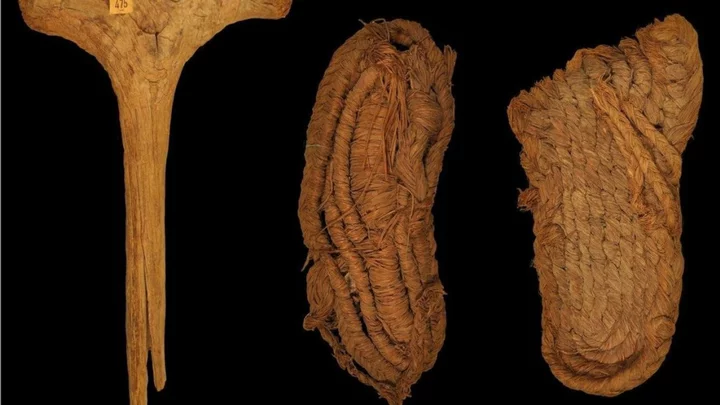
Prehistoric footwear dating back 6,200 years discovered in a Spanish cave
A pair of shoes thought to be the oldest ever found in Europe are now estimated to be even older than scientists had previously thought. About 20 pairs of sandals found in southern Spain are at least 6,200 years old, while other woven objects found in the cave date back 9,500 years, according to a new study. The scientists used carbon-dating on 76 objects found in the Cueva de los Murciélagos, Albuñol, near Granada, which were originally discovered by miners in the 19th century. The objects are particularly valuable to science because they represent the first direct evidence of certain hunter-gatherer skills, such as weaving, in southern Europe. They are made of wood, reed and esparto grass. The shoes measured about eight inches in length. The study was published in the journal Science Advances by a team from the Universidad de Alcalá (UAH) and the Universitat Autònoma de Barcelona (UAB). Francisco Martínez Sevilla, a researcher at the Prehistory Department of UAH, said: “These are the earliest and widest-ranging assemblage of prehistoric footwear, both in the Iberian Peninsula and in Europe, unparalleled at other latitudes. “The new dating of the esparto baskets from the Cueva de los Murciélagos of Albuñol opens a window of opportunity to understanding the last hunter-gatherer societies of the early Holocene. “The quality and technological complexity of the basketry makes us question the simplistic assumptions we have about human communities prior to the arrival of agriculture in Southern Europe.” He said the project placed the cave as “a unique site in Europe to study the organic materials of prehistoric populations”. Cueva de los Murciélagos, or “Cave of the Bats,” is located on the coast of Granada, to the south of the Sierra Nevada. The finds are thought to have been so well-preserved because of low humidity levels in the area. Study co-author María Herrero Otal added: “The esparto grass objects from Cueva de los Murciélagos are the oldest and best-preserved set of plant fibre materials in Southern Europe so far known. “The technological diversity and the treatment of the raw material documented demonstrates the ability of prehistoric communities to master this type of craftsmanship, at least since 9,500 years ago, in the Mesolithic period. “Only one type of technique related to hunter-gatherers has been identified, while the typological, technological and treatment range of esparto grass was extended during the Neolithic from 7,200 to 6,200 years before the present.” Sign up to our free Indy100 weekly newsletter Have your say in our news democracy. Click the upvote icon at the top of the page to help raise this article through the indy100 rankings.
2023-10-09 17:57
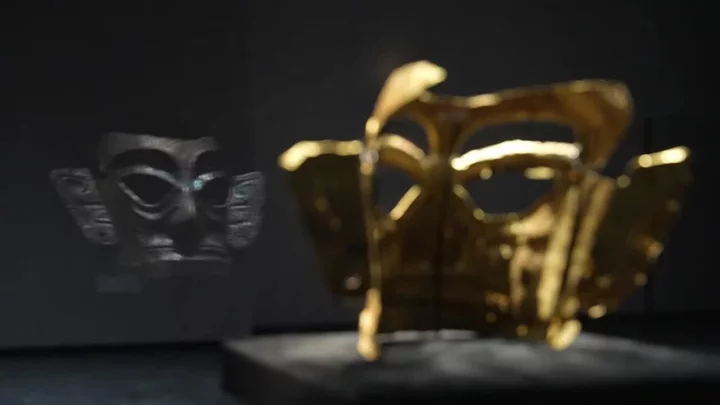
Archaeologists have just found a rare 18th-century cold bath
Archaeologists have found a rare cold bath below the 18th-century Bath Assembly Rooms. The rooms, completed in 1771, were fashionable places of entertainment, conversation, dancing and gambling and cold baths were seen as good for people's health. The cold bath is in the centre of a suite of three rooms beneath one end of the ballroom. It has dressing rooms on either side. The excavation involved removing a later floor that had been installed over the cold bath and removing tonnes of rubble to reveal steps down into it. Bruce Eaton, of Wessex Archaeology, which oversaw the excavation, told the Guardian: “Although historical records indicated that there was a cold bath buried beneath the Bath Assembly Rooms, we had no idea what preservation of the bath would be like. “The building suffered damage at the hands of the Luftwaffe and the rooms were remodelled in the late 20th century but, after carefully excavating tonnes of concrete and rubble, we saw the original structure emerge in its entirety. “It’s tremendous to be able to piece together this rare archaeological evidence of an 18th-century cold bath with social historical accounts from the time.” Tatjana LeBoff, a project curator at the National Trust, said: “The cold bath at the assembly rooms is highly unusual. It is a rare, if not unique, surviving example, and possibly it was the only one ever built in an assembly room.” The trust was researching records, letters, diaries and other documents to discover more about the cold bath, she said. Sign up to our free Indy100 weekly newsletter Have your say in our news democracy. Click the upvote icon at the top of the page to help raise this article through the indy100 rankings.
2023-10-09 16:47
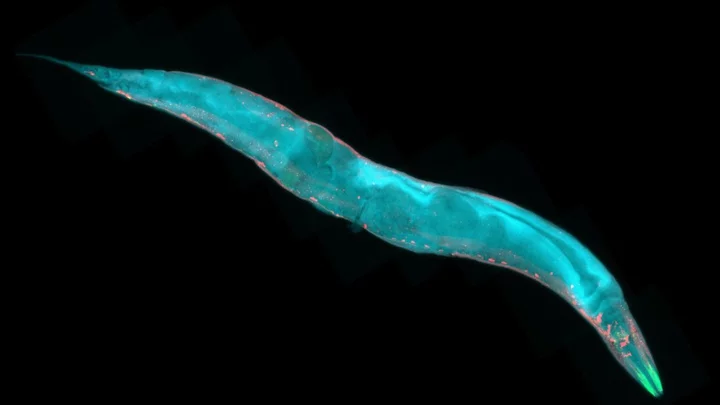
Study suggests even basic worms can experience human-like emotions
Everybody hurts sometimes – even the most basic worms in the animal kingdom which have no eyes, spine or brain. That’s what scientists have found out about nematode species Caenorhabditis elegans, which possesses basic emotions such as fear. Researchers zapped the worms to see if they would display negative reactions, and the worms continued to “flee” at high speeds for minutes after. The scientists at Nagoya City University in Japan and Northeastern University in the US said the response shows a brain state which is comparable to fear in humans. "These properties have been recently regarded as essential features of emotion, suggesting that C. elegans response to electric shock may reflect a form of emotion, akin to fear," the researchers wrote. The findings are the most recent in a debate over which animals can experience primitive versions of our own emotions. Crayfish and bumblebees have all shown animals can have lasting positive and negative mental states. C. elegans is one of the most basic worms in the animal kingdom. At about 1mm in length it is also tiny and transparent, with no brain, sight or smell. Nonetheless, worms which sensed an electric current for 45 seconds “ran away” for more than two minutes. During this state, they ignored food which was placed nearby, instead scurrying at high speeds. This suggests that the emotional response could be triggered by different stimuli and that one stimulus could inhibit responses to others. When the shock was just five seconds long, the worms fled for a minute and a half before calming down. And when the researchers repeated the experiments with worms that were not to produce neuropeptides – which are the equivalent to human hormones – the worms stayed in a state of fear for longer. "Because the requirement of neuropeptide signaling [in worms] is reminiscent of neuropeptide regulation of fear in mammals including humans, the fear-like brain state may be regulated by evolutionarily conserved molecular mechanisms," the authors of the study wrote. Sign up to our free Indy100 weekly newsletter Have your say in our news democracy. Click the upvote icon at the top of the page to help raise this article through the indy100 rankings.
2023-10-08 18:17

5 times celebrities have spoken out against AI deepfakes
Deepfakes are becoming an increasing concern online with many celebrities and influencers' faces fronting fake scams – and in more sinister cases, NSFW material. For the blissfully unaware, a deepfake is a digitally altered piece of content, often without concern. They're often used with malicious intent for financial gain or to spread false information. The surge in deepfakes has prompted many high profilers to come forward and speak out including MrBeast and Tom Hanks: Martin Lewis The nation's favourite money-saving expert issued a warning over a "disgraceful" scam that could lead vulnerable people to lose money. Lewis said people are using the technology to "pervert and destroy" his reputation to scam people. An advert, which circulated online earlier this year, appeared to show Lewis endorsing an Elon Musk-backed investment scheme. "Musk’s new project opens up new opportunities for British citizens. No project has ever given such opportunities to residents of the country," the AI version of Lewis says in the footage. The real Lewis later told the BBC "it's pretty frightening." He continued: "These people are trying to pervert and destroy my reputation in order to steal money off vulnerable people, and frankly, it is disgraceful, and people are going to lose money and people’s mental health are going to be affected." MrBeast The popular YouTuber took to X/Twitter to address a deepfake video that went viral online. "Lots of people are getting this deepfake scam ad of me… are social media platforms ready to handle the rise of AI deepfakes? This is a serious problem," he posted to the platform. MrBeast included a clip that has been circulating online, that shows an AI version of him saying he's giving away iPhones. "You’re one of the 10,000 lucky people who will get an iPhone 15 pro for just $2," the deceiving clip said. "I’m MrBeast and I am doing the world’s largest iPhone 15 giveaway." Tom Hanks Hanks was forced to issue a warning over a deepfake advert promoting a dental plan using his presence. In a post to Instagram, Hank shared a screenshot of the ad, with overlaid text reading: "BEWARE!! There’s a video out there promoting some dental plan with an AI version of me. I have nothing to do with it." Nicki Minaj In a much lighter incident, the rapper was featured in ITV's Deep Fake Neighbour Wars. The programme showed an AI version of Minaj and her 'husband,' Tom Holland. Upon arriving home from their honeymoon, they found an intruder in their living room, Mark Zuckerberg. It plays on an internet rumour that joked Minaj and Holland were dating and expecting a baby in 2019. At the time, the actor joked to Esquire: "This actually really stressed me out... and then I realised I've never met Nicki Minaj. So that was a big relief for me because I'm not ready to have kids." She wrote: "HELP!!! What in the AI shapeshifting cloning conspiracy theory is this?!?!! I hope the whole internet get deleted!!!" Streamer Sweet Anita Meanwhile, popular streamer Sweet Anita was horrified to learn she was targeted by deepfake porn without her consent. "It has all the same consequences of revenge porn, and so now I will be living those consequences for a choice I never made," Sweet Anita told ITV. The streamer said the situation has made her "tired" and heightened her security fears. Sign up for our free Indy100 weekly newsletter Have your say in our news democracy. Click the upvote icon at the top of the page to help raise this article through the indy100 rankings.
2023-10-08 17:28
